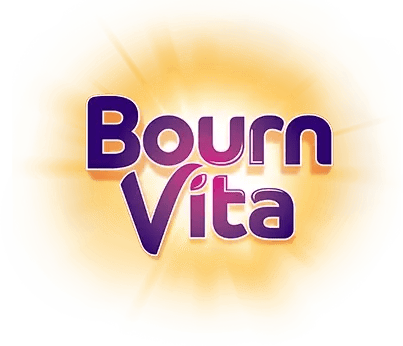- Moro Reflex (Startle Reflex)
- Rooting Reflex
- Grasp Reflex
- Stepping Reflex
- Tonic Neck Reflex (Fencer’s Pose)
- Absent or Uneven Reflexes
- No Reaction to Loud Noises or Sudden Movements
- Reflexes Lasting Longer Than Usual
- Very Stiff or Very Floppy Movements
- No Grasp Response by 2 Months
Introduction

Those tiny jerks, sudden stretches or curling toes in newborns can be amazing and confusing for new parents. But what looks weird to us is normal for a baby’s developing body. From the moment they’re born, babies show a series of automatic movements, each one helping them adjust to the world outside the womb. These reflexes aren’t just cute or quirky; they’re signs of healthy brain and nerve development.
Most newborn reflexes are nature’s way of protecting and preparing the body. A baby might grab your finger tightly, throw out their arms when startled, or turn their head towards a touch on the cheek. These are instinctive and though they fade over time, they serve important purposes in early life, helping your baby feed, move or react to change. Knowing which reflexes are expected, how long they last and when they disappear can help you feel more confident in your baby’s growth.
It’s also good to notice if any reflex seems absent, too strong or doesn’t fade with time. While most patterns are normal, some may need a closer look. Knowing the difference can reduce anxiety and guide you in supporting your baby’s journey through these early months with reassurance, comfort, and the right attention.
Understanding Newborn Reflexes: What’s Normal and What’s Not

From the very first moments of life, babies begin to show reflexes, those small, automatic actions that seem instinctive. These movements are often signs that your baby’s brain, nerves, and muscles are developing well. Some help babies feed and stay safe, while others prepare their bodies for future skills like walking or sitting. But while many reflexes are perfectly normal and temporary, some behaviors might need closer observation
5 Reflexes That Are Normal in Newborns
Moro Reflex (Startle Reflex)
This is one of the most well-known newborn reflexes. It often looks dramatic, but it's completely normal and harmless. It usually appears at birth and fades away by 4 to 6 months. According to a study published in Treasure Island 2025, the Moro reflex shows that your baby's central nervous system is working as it should. It can be triggered by a loud sound, sudden movement, or even a change in temperature.
Rooting Reflex
This reflex is especially useful during breastfeeding. It helps your baby find the breast or bottle nipple naturally. It’s most active during the first month and fades around 4 months as babies begin to move their heads and mouths voluntarily. As per a study published in, Treasure Island 2025, It’s also a sign that your baby’s feeding instincts are strong and healthy.
Grasp Reflex
Research conducted by, Int J Pediatr. 2012, shows that this automatic grip is not just a charming moment, it’s a key sign of motor development and nerve function. Newborns show this reflex from birth until about 5 to 6 months of age. As voluntary motor control takes over, this reflex fades. It’s also seen in the feet, your baby might curl their toes when the sole is touched.
Stepping Reflex
Though your baby is not ready to walk yet, this reflex shows up from birth and disappears around 6 weeks of age. It is cute, and it also reflects early leg muscle activity and coordination. A study published in Treasure Island 2025, suggests that this stepping action helps prepare your baby’s muscles and balance for real walking later on. The reflex is typically brief and fades as your baby grows stronger and more aware of body control.
Tonic Neck Reflex (Fencer’s Pose)
This position may look like a tiny fencer in action, but it plays a major role in hand-eye coordination. This reflex starts at around 2 weeks and usually fades by 5 to 6 months. According to a study published in Treasure Island 2025, it helps babies begin to understand direction and movement. If the reflex is strong or doesn't go away on time, it could delay rolling or crawling, and might need closer monitoring.
5 Reflexes or Behaviors That May Need Attention
Absent or Uneven Reflexes
Most newborn reflexes should occur on both sides of the body. According to National health mission, if a reflex like Moro or grasp is only happening on one side, it could mean a nerve injury during delivery or an issue with muscle tone. This doesn’t always mean something serious, but it’s important to bring it up during regular checkups.
No Reaction to Loud Noises or Sudden Movements
This could be a red flag for hearing loss or neurological concerns. As per the study published in Indian J Otolaryngol Head Neck Surg. 2021, newborns typically react with the Moro reflex to any sudden noise. If your baby remains still or unresponsive to multiple triggers, it’s a good idea to discuss it with a healthcare provider. Early detection of hearing issues can lead to better long-term outcomes.
Reflexes Lasting Longer Than Usual
While newborn reflexes are important, they are meant to fade away as your baby develops voluntary movements. Research conducted by Cureus. 2023, show if these reflexes persist longer than expected, it might interfere with learning to roll, crawl, or sit. It could point to developmental delays or neurological conditions that benefit from early therapy or intervention.
Very Stiff or Very Floppy Movements
According to National Institute of Neurological Disorders and Stroke, this can indicate abnormal muscle tone, either hypertonia (tight muscles) or hypotonia (floppy muscles). Both conditions affect your baby's ability to develop coordinated movement. It’s not uncommon, and early physical therapy can help with strength and control. If your baby seems rigid or very limp, especially during reflex actions, get an evaluation sooner rather than later.
No Grasp Response by 2 Months
According to CARA, this could suggest a delay in motor function, especially if it’s paired with other signs like uneven arm use or weak muscle tone. The grasp reflex is expected to be present from birth, so its absence may point to nerve issues or other developmental concerns that deserve a pediatrician’s attention.
Conclusion

Newborn reflexes are like nature’s little check-ins, automatic movements that show early development is on track. While they can look surprising or even strange at times, they often follow a predictable pattern and fade as your baby grows stronger and more in control of their body. Learning to recognise both the normal and the unusual helps you support your child more confidently. If something feels off, don’t panic, but do speak to your doctor. With your attention and care, you’re already giving your baby a great start on their developmental journey.
Her love for storytelling began with reading her grandfather’s speeches, where Tarishi saw the power of words in creating lasting memories. Combining her passions for food and writing, she has turned her life into a fulfilling path of sharing stories that celebrate flavours and how food brings communities together.
The views expressed are that of the expert alone.
The information provided in this content is for informational purposes only and should not be considered a substitute for professional medical advice, diagnosis, or treatment. Always seek the advice of your physician or another qualified healthcare provider before making any significant changes to your diet, exercise, or medication routines.
References
https://cara.wcd.gov.in/PDF/Circular/Developmenat%20milestones.pdf
https://www.ninds.nih.gov/health-information/disorders/cerebral-palsy
https://pmc.ncbi.nlm.nih.gov/articles/PMC10506688/
https://pmc.ncbi.nlm.nih.gov/articles/PMC9895613/
https://www.ncbi.nlm.nih.gov/books/NBK559210/
https://www.ncbi.nlm.nih.gov/books/NBK554606/
https://pmc.ncbi.nlm.nih.gov/articles/PMC3384944/
















